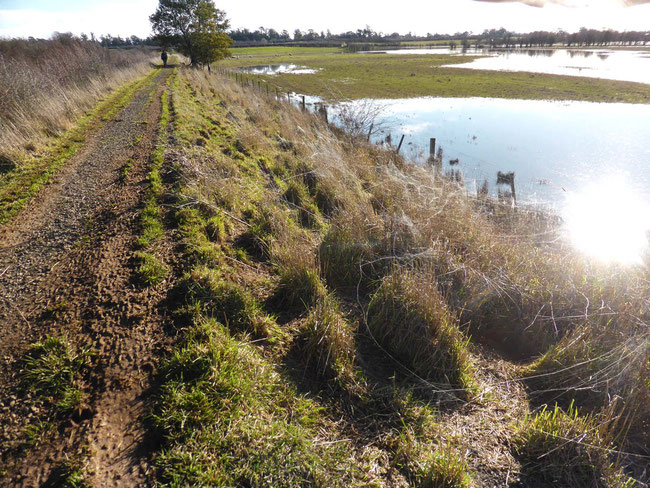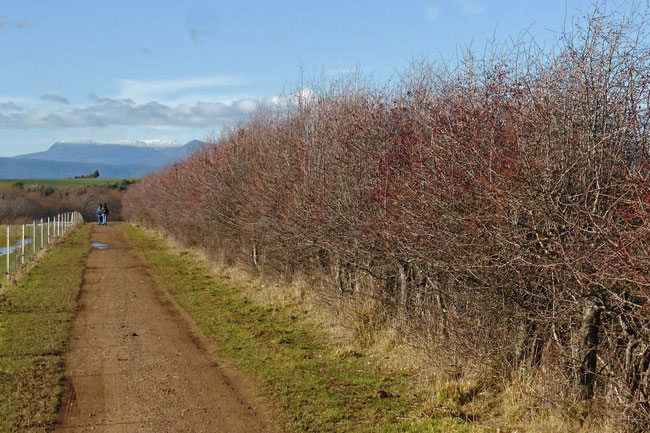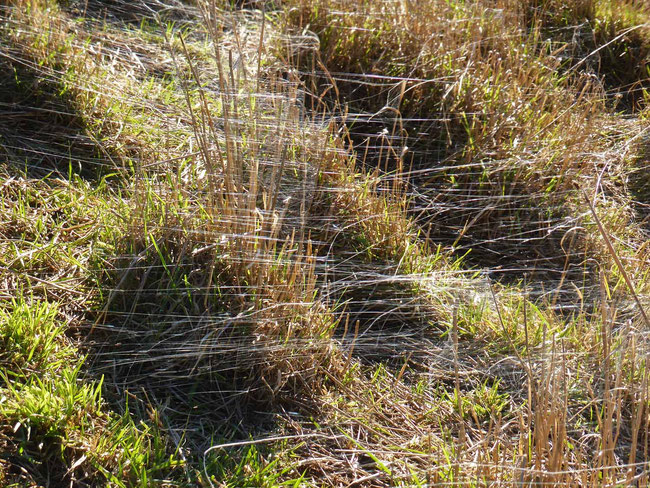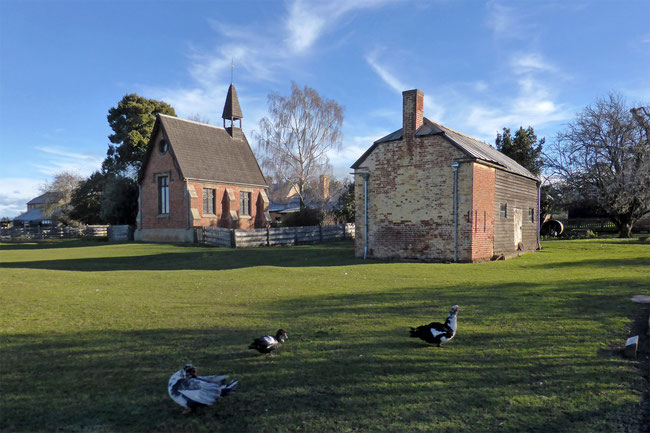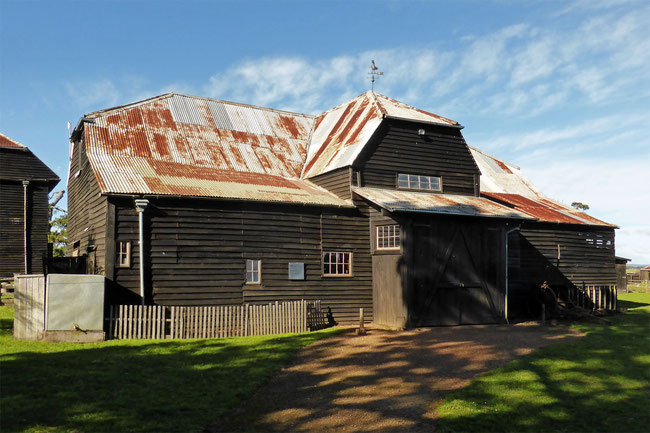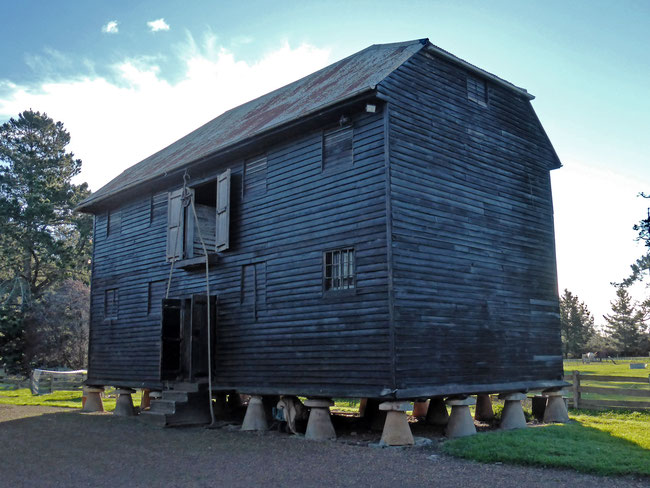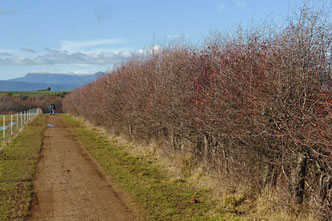
18th-century Britain’s answer to America’s slave trade was convict transportation, and Tasmania has a substantial convict history – convict labour built much of the early infrastructure here.
During Australia's convict period the colonial governments allocated convicts as free labour to landholders, allowing them to develop their estates to become substantial and impressive.
Many of these historic convict-built estates still exist, and are now preserved. Brickendon Estate and Woolmers Estate near Launceston in northern Tasmania, which were developed from the 1820s, are two such estates which used convict labour.
The walking path
Brickendon Estate and Woolmers Estate were close enough together, at around two-and-a-half kilometres, to share resources, including their convict labour. This resulted in a pathway between the two estates. The pathway is still in place, and it makes a lovely walk through the pastoral countryside from one estate to the other. We have walked this pathway a few times, and we did it again recently.
The path is mostly on raised levees that pass through the flood plain of the Macquarie River.
The interpretive sign boards here refer to the Colonial-era people describing this place as "waterlogged soil", turned productive by draining; today we would probably have called it a thriving wetland, worthy of world heritage listing, but that’s history now!
We’ve just had some heavy rain (by Tasmanian standards), and the Macquarie River has expanded out of its banks across the flood plain, and up to the levees.
This flooding has actually cut the end of the walking path where it meets Woolmers Estate; but we can still walk almost all of it from the Brickendon Estate end.
The snowy mountains
Most of the walking path has the Ben Lomond alpine plateau in view, which, as it is presently covered in snow, makes a great backdrop to the walk.
Farm animals
Brickendon Estate is a working sheep farm, and we passed many sheep in the partially flooded paddocks on our walk:
There are ‘pet’ farm animals on the estate; too; here’s a short slide show of a few of them:
There are turkey hens here. Last time I was here there were gobblers (male turkeys), too; but now there only seem to be hens. But then, that previous visit was just before Christmas.
Hawthorn hedgerows
It's winter here now, and many of the old trees here are exotic deciduous trees, and are bare of leaves. One of those deciduous plants is Hawthorn, a bush or small tree that the early European colonists brought to Australia.
Hawthorn makes an excellent hedge if it’s properly pruned and tended – it becomes a close-knit mass of small strong branches covered in thorns. Brickendon Estate has 30 kilometres of hawthorn hedgerow, and the walking route runs a long a few kilometres of it; here’s a section with Ben Lomond in the background:
Hawthorns produce masses of small, edible, red berries (don’t eat the seeds, though) that are used to make jam. These hawthorn bushes still have plenty of last season’s berries on them:
Here’s a closer view of some of those old-season hawthorn berries:
In the summer the hawthorn hedgerow is a favourite place for small birds to nest, as the dense branches and foliage and the many thorns protect the nests. Now, in the winter, the temporarily abandoned nests are clearly visible:
Arachnophobia
A gentle breeze was blowing as we walked along the levees through the paddocks. The last of the tall summer grass stalks were standing along the edge of the path. These tall stalks were being used by at least tens-of-thousands, and probably millions, of baby spiders to migrate across the landscape, which they do by spinning out long strands of fine spider silk until the breeze catches them and carries them away.
Here’s the silk on the grass, catching the low sun:
Here’s a closer view of the spider silk streaming across the walking path:
We ended up with masses of this silk and the baby spiders over our legs as we walked past the webs for a kilometre or so.
Brickendon Estate village
Although we were here primarily to do the walk we passed through the old farm village on Brickendon Estate, where there are some lovely old buildings.
Note the rat-proof pillars on the grain store.
Walking the path
You can walk this path from either the Brickendon Estate or the Woolmers Estate end. Brickendon Estate is private property (same family for seven generations) and Woolmers Estate is operated by a trust, and both charge an entry fee.
As we have visited both estates before and were only interested in doing the walk between them this time, we chose to enter from the Brickendon Estate end because their entry fee is only $12.50, as opposed to $20 at Woolmers Estate. If we were going to visit both of the estates and planned to do the walk between them we would also start at the Brickendon end because Woolmers Estate give you a good discount (not sure how much) if you have walked from Brickendon Estate, and I don’t think that happens the other way around.
Either estate is worth visiting in its own right; both for their historic buildings, Brickendon Estate because it’s a working sheep farm, and Woolmers Estate for its formal gardens, especially the rose gardens. We didn’t get to Woolmers estate this time because the flooding Macquarie River had cut off the suspension foot bridge across the Macquarie River, but the gardens aren’t flowering in the winter anyway, so we’ll go back there in the spring.
Here’s a Google Earth aerial view of our walk through the farmland and along the Macquarie River between Brickendon Estate and Woolmers Estate:
Post-walk goodies
If you visit these estates, drop in at JJ’s Bakery in the Old Emerald Flour Mill building in Longford on the way out for excellent almond croissants, carrot-cake muffins, quiches and other goodies in a Tasmanian-cute setting!
Tags
If you enjoyed this blog post, you can find related posts under these headings:
Share this The Journey and the Destination post using your favourite social media:
Would you like to add something, or ask a question? Add a comment below (you can leave the 'Website' field blank):

